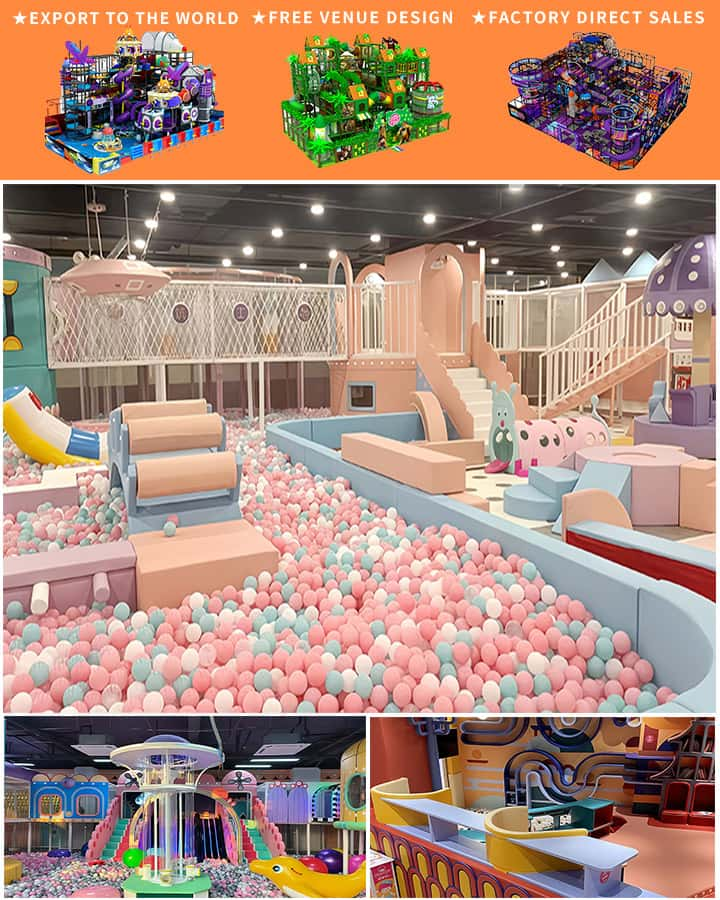In today’s fast-paced world, where outdoor time can be limited due to busy schedules or inclement weather, having a well-designed indoor playground for children is a fantastic solution. An indoor playground offers a safe, engaging, and stimulating environment for kids to enjoy physical activity, social interaction, and creative play. This comprehensive guide will explore the essential elements of designing an indoor playground that caters to children’s needs and ensures their enjoyment and safety.
Importance of Indoor Playgrounds
Indoor playgrounds are more than just a place for children to expend energy; they serve as vital spaces for development. These environments promote physical fitness, improve motor skills, encourage socialization, and stimulate cognitive and imaginative growth. With the right design and equipment, an indoor playground can become a favorite destination for children, providing them with endless hours of fun and learning opportunities.
Key Design Considerations
Safety First Safety is paramount when designing an indoor playground. Ensure that the flooring is soft and cushioned to prevent injuries from falls. Use non-toxic materials for all equipment and surfaces to protect children’s health. Install padded mats under climbing structures, slides, and other high-risk areas. Regularly inspect and maintain all equipment to ensure it remains in good condition.
Age-Appropriate Equipment Provide a variety of equipment suitable for different age groups. For toddlers, incorporate low-level slides, tunnels, and soft play areas. For older children, include climbing walls, obstacle courses, and trampolines. Clearly separate sections based on age to prevent accidents and allow each group to enjoy their activities without disruption.
Stimulating Environment Create an inviting atmosphere with bright colors, playful themes, and engaging decorations. Incorporate sensory elements such as textured walls, interactive installations, and sound features to stimulate children’s senses. Natural light is beneficial, but if that’s not possible, use warm, ambient lighting to create a welcoming environment.

Flexible Space Design the indoor playground to be versatile and adaptable. Use modular equipment that can be rearranged to offer new challenges and experiences. Leave some open space for free play, which encourages creativity and imagination. Consider incorporating multipurpose areas that can host events like birthday parties or educational workshops.
Parental Comfort Don’t forget about the parents! Create comfortable seating areas where guardians can relax while keeping an eye on their children. Offer amenities like Wi-Fi, refreshments, and restrooms to make the experience enjoyable for everyone. A parent-friendly environment enhances the overall experience and encourages repeat visits.
Popular Features in Indoor Playgrounds
Climbing Structures Climbing walls, ropes, and ladders challenge children physically and build confidence as they overcome obstacles. These structures also promote problem-solving skills and coordination.
Slides Slides come in various shapes and sizes, from gentle spiral slides for younger children to steep drops for thrill-seekers. They provide exhilarating fun and can be integrated into multi-level play structures.
Ball Pools Filled with colorful plastic balls, ball pools are a favorite among young children. They offer a sensory-rich environment where kids can dive, jump, and play hide-and-seek.
Interactive Games Electronic games, such as touchscreen tables or interactive floor projections, combine physical activity with digital engagement. These games can be both educational and entertaining, catering to different interests.
Soft Play Areas Padded play zones equipped with foam shapes, tunnels, and mini obstacles are perfect for toddlers. These areas provide a safe space for exploration and movement.
Maintenance and Safety Tips
- Schedule regular inspections of all equipment to identify and address any potential hazards.
- Clean the playground daily to remove dirt, debris, and spills. Disinfect high-touch surfaces frequently.
- Train staff members on safety protocols and emergency procedures. Ensure they can supervise the playground effectively.
- Display clear rules and guidelines for children to follow, including behavior expectations and safety instructions.
Conclusion
Building an indoor playground for children requires thoughtful planning and attention to detail. By prioritizing safety, incorporating age-appropriate equipment, creating a stimulating environment, and considering parental comfort, you can design a space that delights children and provides numerous developmental benefits. Whether you’re setting up a commercial facility or creating a play area at home, these guidelines will help you craft an indoor playground that fosters joy, creativity, and growth for children of all ages.




